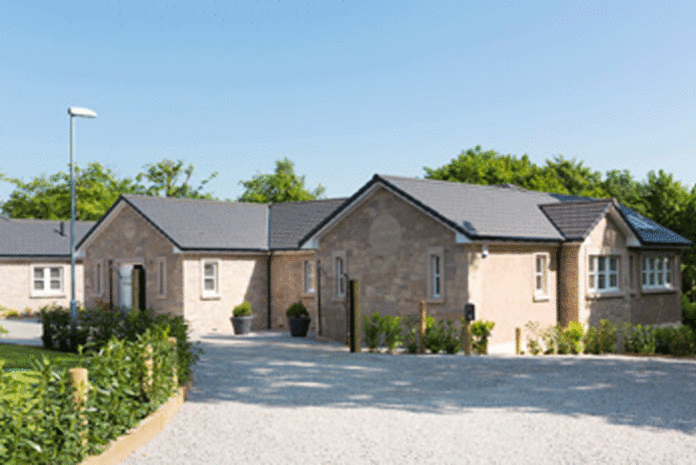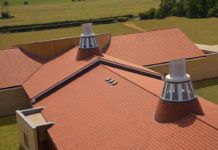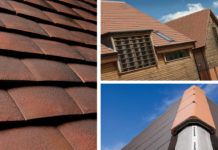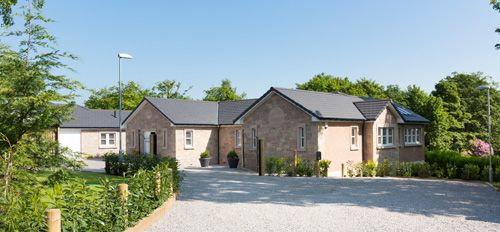 It is hard to work in the clay building material industry without feeling passionate about clay; one of the most beautiful and versatile materials at our disposal, whether it be paving, walling or roofing materials. It is no exaggeration to say that clay can be moulded into more shapes and types of roofing tiles than any other material currently in common use as a building material.
It is hard to work in the clay building material industry without feeling passionate about clay; one of the most beautiful and versatile materials at our disposal, whether it be paving, walling or roofing materials. It is no exaggeration to say that clay can be moulded into more shapes and types of roofing tiles than any other material currently in common use as a building material.
Clay offers many advantages over other roofing materials and is actually stronger when compared like-for-like in terms of material thickness, than slate and concrete, though I say this without any detriment to slates or concrete roof tiles, both of which are perfectly strong and durable as roofing products.
Looking back through history
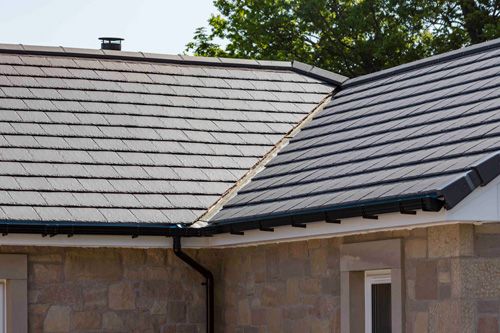 Firstly, a brief history: we can trace clay roof tiles in the UK at least as far back as the Roman era – the Romans used ‘under and over’ tiles; i.e. flat trays with cylindrical overs covering the joints. Hence, the term ‘double roman’ for modern interlocking tiles, which mimic the appearance of under and over tiles. Plain, or flat, clay tiles came into general use around the 12th or 13th century. Overlapping tiles, such as pantiles, came to Britain from the Netherlands around the 16th century.
Firstly, a brief history: we can trace clay roof tiles in the UK at least as far back as the Roman era – the Romans used ‘under and over’ tiles; i.e. flat trays with cylindrical overs covering the joints. Hence, the term ‘double roman’ for modern interlocking tiles, which mimic the appearance of under and over tiles. Plain, or flat, clay tiles came into general use around the 12th or 13th century. Overlapping tiles, such as pantiles, came to Britain from the Netherlands around the 16th century.
Concrete roofing tiles were introduced into the UK around 100 years ago, with many of the popular concrete tile shapes being based on traditional clay tiles, such as roman, pantile and plain tiles. The manufacturing process makes concrete tile design simpler than that of an equivalent clay tile; a by-product of this was that concrete tiles rapidly gained favour with contractors as being easier to fix on the roof.
Great advances have been made in clay tile technology; many tiles are now dried and fired fully supported on individual ‘setters’, thus enabling much greater control over the finished shape of each tile. Kiln temperatures are carefully controlled, without variations throughout areas of the kiln, enabling far greater certainty of quality and long-term durability. So, clay tiles are now every bit as accurate and stable in dimensional tolerances as concrete tiles.
All this has enabled clay tile manufacturers to re-create the classic clay tile models, but incorporating the very features that make concrete tiles so easy to install. For example, New Generation Sandtoft clay tiles from Wienerberger, such as Cassius, Olympus, 20/20 and Neo have an ‘open gauge’, allowing roofers to easily set the gauge on the roof without the need for cut, or short courses; just like concrete tiles.
Advantages of clay tiles
The method of manufacture of clay tiles enables clay tiles to have other advantages over concrete tiles. Because many clay tiles are pressed, rather than being simply extruded as concrete tile are, additional features can be incorporated onto the top surface, such as channels, grooves or upstands to prevent water entering nail holes and weather bars to reduce capillary action and wind-driven rain penetration. These features will not only improve the weathertightness of the tiles, they can also assist in wind uplift resistance in conjunction with the tile fixings.
The huge advantage of clay tiles, of course, is that their colour and surface finish is permanent, lasting the life of the tiles; surely an important consideration when choosing materials and designing a roof. The application of ‘engobe’ to the tile surface before firing enables endless possibilities of colours and textures to enhance the vibrancy of clay tiles. Engobe is a ceramic material, consisting of clay, glass and manganese oxides. The glass produces a strong, vitrified scratch-resistant surface. Manganese oxides give the required colour. The clay content ensures that when the tile is fired, the engobe and tile ‘fuse’ together and become one and permanent.
There are other, technical advantages of clay tiles. They are generally lighter in weight than equivalent concrete tiles. This does not necessarily translate into a reduction in roof structural materials, but it does make life much easier for the installer and certainly provides a greater margin with regard to imposed forces such as wind and snow loads.
Many aesthetic features can be included on clay tiles, such as finished lower edges; the tails of clay tiles can be chamfered, rounded, square-edged and riven; the possibilities are endless. Riven patterns can be applied to top surfaces to emulate natural slate. This means that, together with realistic slate colours that are permanent, clay tiles make an ideal alternative to natural slate. Great examples of slate-alternative clay tiles are Wienerberger’s Sandtoft Rivius and Balmoral tiles. Clay enables the designer to specify a clay alternative to slate, knowing that the life expectancy of the product is at least equal to slate and the colour will remain for the life of the product, again, just like slate.
Handmade clay tiles
Of course, having extolled the virtues of modern clay tile production, traditional clay tiles, such as pantiles and plain tiles – many handmade – are a very important part of UK clay tile production in ensuring we protect and maintain our built heritage. One only has to look at the Wienerberger Keymer range of plain tiles to appreciate the beauty of handmade clay tiles. Traditional moulding techniques, combined with modern firing methods, come together to offer traditional and durable roofs.
OK, so I am passionate about clay, but even I know how important cost is in today’s competitive environment. In terms of material comparisons, prices of labour and materials can vary tremendously by region and particular product type, but as a rough comparison, a Wienerberger Sandtoft Cassius tile roof could be around 45% cheaper than a comparative slate roof. Similarly, a Wienerberger Sandtoft 20/20 roof could be around 25% cheaper than a concrete plain tile roof.
In conclusion, clay roof tiles offer the beauty of a natural material, combined with affordable installation costs, long-term durability and an appearance that will not diminish over time.

